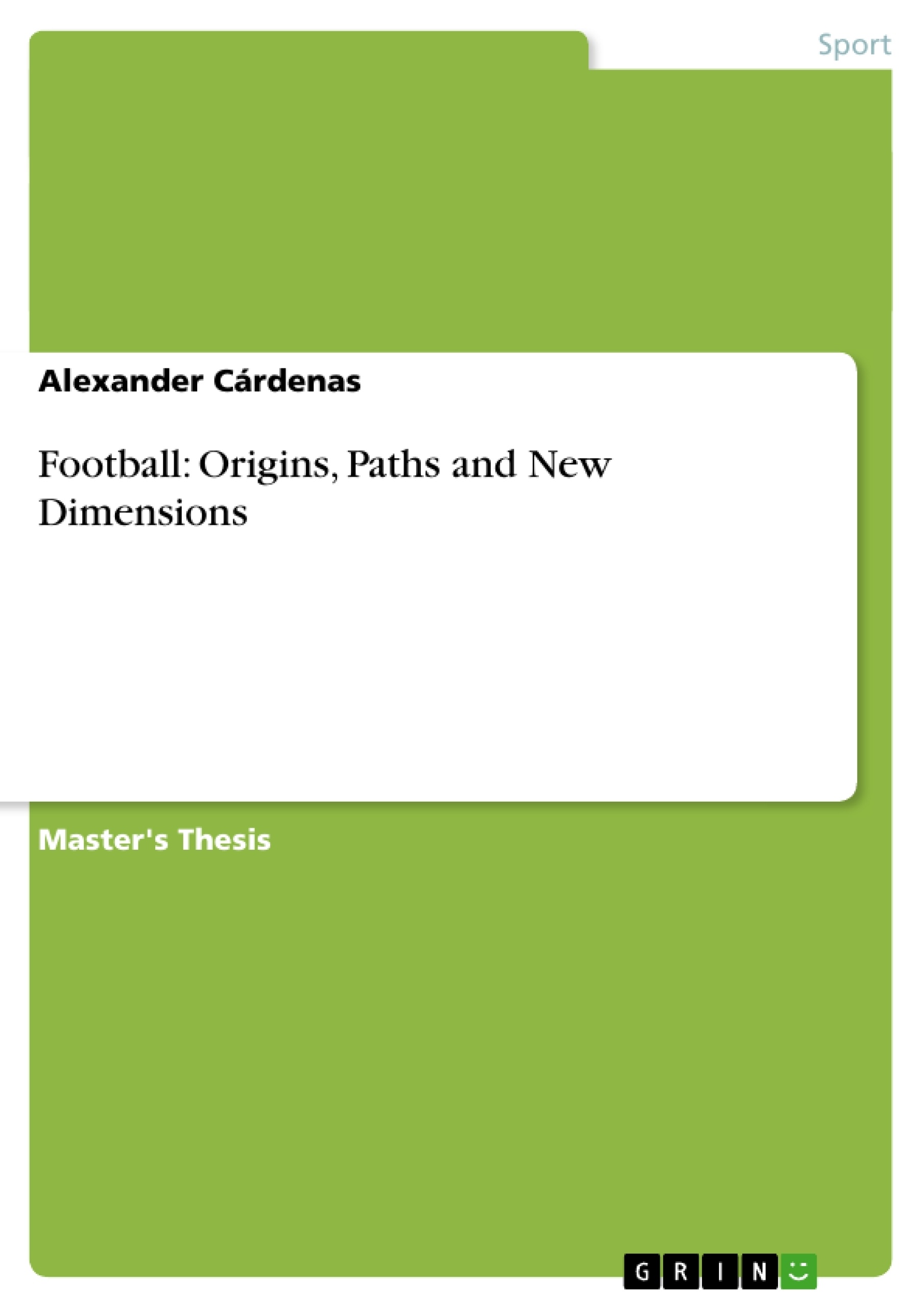Football’s consolidation as the world’s most popular sport is a result of both the inherent attributes of the game, that is its simplicity and universality, as well as the historical processes that have contributed to the unprecedented expansion of the geography of the sport throughout time. Today, football represents a professional activity, an instrument to mobilize the masses, a profitable business, a focus of violence and unrest and most recently, a tool for social development and peace. Although the sport has undergone very little structural transformation in the last decades, the major development in the world of football has taken place in the new application of the sport as a tool for social change. This has generated a true global social movement encompassing a multitude of actors such as national governments, the private sector, international organisations and NGOs around the issues of development and peace through the power of the sport. With this background, the purpose of this thesis is two-fold: 1) to provide an overview of the history and evolution of football and to analyse the processes that contributed to its emergence and consolidation as a global phenomenon and 2) to bring to light the recent transformation experienced by the sport as a social movement and as an agent for transformation and change. This part includes the grassroots project “Goals for Peace” in Colombia and the Philippines which aims at assessing the ways and extent to which the sport can be a transformative tool.
Inhaltsverzeichnis (Table of Contents)
- Introduction
- Thesis Structure
- Research Methods
- Data Triangulation
- Interviews
- Photographs
- Participant Observation
- Case Study
- Origins of the Football
- The Initial Kick: Prehistory and History of Football
- Bans on the Game
- Modern Football: Britain's Contribution to the World
- Professionalization of Football
- The Global Explosion of Football
- From Britain with Love: Football's First Wave of Expansion
- The Colonial World
- Africa
- Asia
- Europe
- Latin America
- Football Arrives in Colombia
- El Dorado
- FIFA and the World of Football
- Football's Second Wave of Expansion
- Joao Havelange in FIFA: The Federation Goes Global
- The Media and the Markets
- The Profitable Business of Football
- Football-Related Violence
- Hooliganism
- Football Related Violence in Colombia
- Police and Community Efforts
- The British Example
- The New Dimensions of Football
- Football as a Tool for Development and Peace
- Football and Social Development Networks
- The Football for Hope Movement
- Colombianitos
- Goals for a Better Life Program
- Approach
- Community Impact
- Methodology
- The Mentor Plan
- Financing Partners
- The Goals for Peace Project
- Introduction
- Objectives
- Research Methods
- The Goals for Peace Project in Ciudad Bolivar, Colombia
- Ciudad Bolivar Background
- Geographic Location and Demographics
- Social Conditions
- Community Initiatives and Participation
- Goals for Peace Partners in Ciudad Bolivar
- Activities
- Football Training
- Seminars and Training
- Community Participation
- Results and Analysis
- Interaction: Teams' Successes and Difficulties
- The Modules
- Accomplishments Attained
- Ability to Coexist and Interact
- Gender Roles
- Social Inclusion
- Leadership Skills
- Additional Accomplishments
- Reflections
Zielsetzung und Themenschwerpunkte (Objectives and Key Themes)
This master thesis aims to explore the historical development of football, from its origins to its current global presence and its potential as a tool for social development and peacebuilding. The thesis analyzes the impact of colonialism, globalization, and media on the sport's expansion, as well as the challenges posed by violence and hooliganism. Key themes explored include:- The evolution of football from its origins to the modern game.
- The role of colonialism and globalization in the spread of football.
- The impact of media and market forces on the sport.
- The potential of football as a tool for social development and peacebuilding.
- The challenges of violence and hooliganism in football.
Zusammenfassung der Kapitel (Chapter Summaries)
Introduction
This chapter outlines the structure of the thesis and introduces the research methods used. These methods include data triangulation, interviews, photographs, participant observation, and a case study.Origins of the Football
This chapter examines the historical origins of football, tracing its development from prehistory to the modern game. It explores early forms of football, the bans imposed on the game, and the crucial contribution of Britain to the sport's modernization. The professionalization of football in the late 19th and early 20th centuries is also discussed.The Global Explosion of Football
This chapter examines the global spread of football, focusing on two key waves of expansion. The first wave is attributed to Britain's colonial influence, while the second wave is linked to FIFA's globalization efforts under João Havelange. The chapter also explores the impact of media and market forces on the sport, as well as the challenges of football-related violence, particularly hooliganism.The New Dimensions of Football
This chapter explores the potential of football as a tool for social development and peacebuilding. It examines the work of organizations like the Football for Hope Movement, the Colombianitos program, and the Goals for Peace project. The chapter examines the methodologies and results of these initiatives, particularly the Goals for Peace project in Ciudad Bolivar, Colombia.Schlüsselwörter (Keywords)
The main keywords and focus topics of this work include football, origins, history, globalization, colonialism, media, market forces, social development, peacebuilding, violence, hooliganism, FIFA, the Football for Hope Movement, Colombianitos, the Goals for Peace project, and Ciudad Bolivar, Colombia.- Quote paper
- Alexander Cárdenas (Author), 2010, Football: Origins, Paths and New Dimensions, Munich, GRIN Verlag, https://www.grin.com/document/268783



